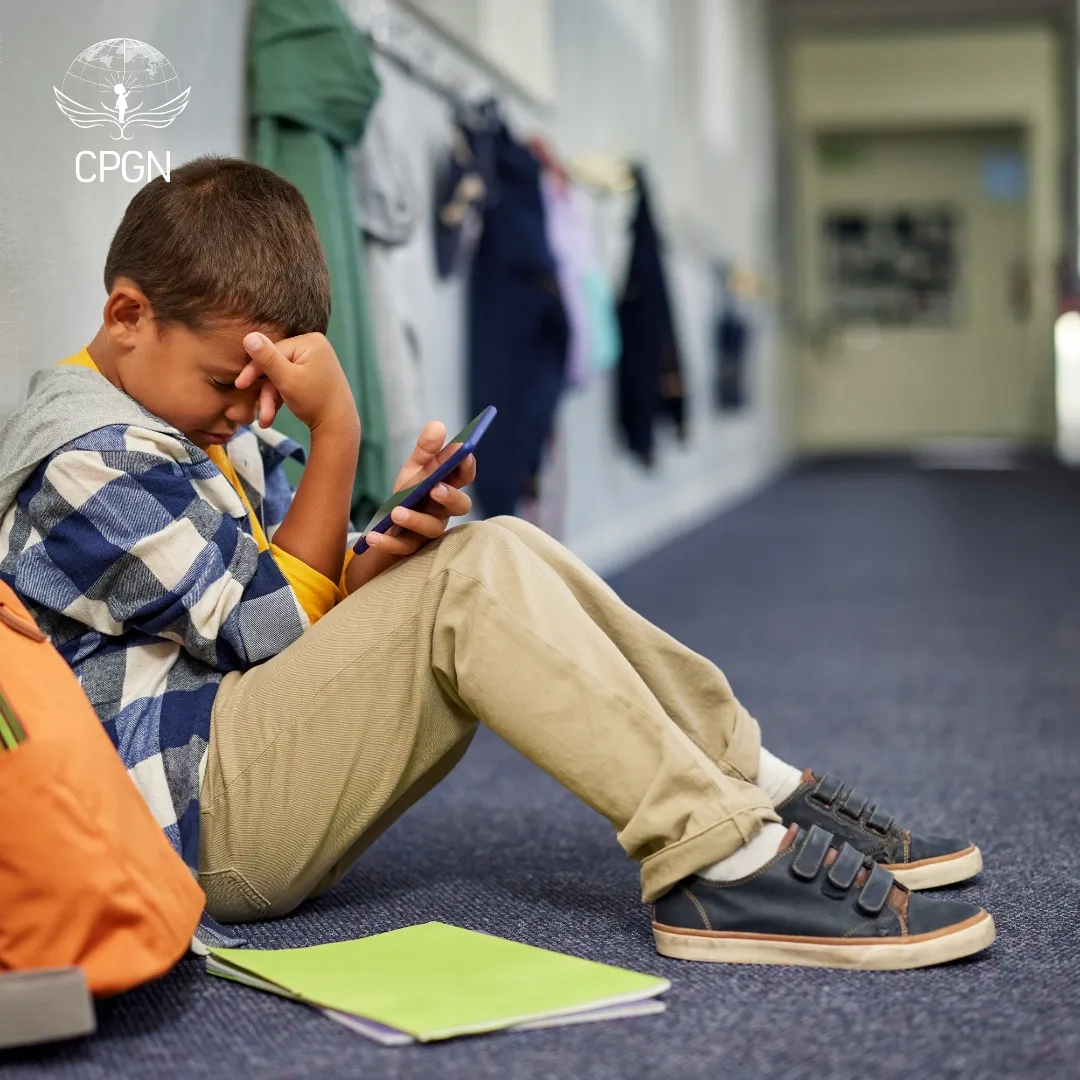5 Effective Ways to Prevent Cyberbullying
This article explores practical solutions, emotional support strategies, and online safety tips for kids to help protect children from online harassment.

Cyberbullying is more than just mean words online. It’s a serious issue that can harm a child’s emotional well-being, confidence, and sense of safety. Unlike traditional bullying, it doesn’t stop when school ends.
With smartphones, social media, and gaming platforms, children can be targeted anytime, anywhere. That’s why finding effective ways to prevent cyberbullying is so important.
According to UNICEF, one in three young people worldwide has experienced some form of online bullying. The good news is, parents, teachers, and caring adults can take steps to create safer online spaces.
What Is Cyberbullying?
Cyberbullying happens when someone uses technology like social media, texting, or gaming platforms to harass, humiliate, or threaten another person. Unlike face-to-face bullying, cyberbullying can spread quickly and reach a wide audience.
Examples include:
- Sending mean or threatening messages
- Posting embarrassing photos or videos
- Excluding someone from online groups
- Spreading rumors through social media
The impact goes beyond screens, often leading to anxiety, depression, and social withdrawal. That’s why cyberbullying prevention must be a shared responsibility between schools, parents, and communities.
Signs to Watch in Children
Children often hesitate to tell adults when they’re being bullied online. Adults should watch for subtle behavioral and emotional changes.
Warning signs may include:
- Sudden withdrawal from friends or family
- Avoiding devices they once loved
- Drop in grades or school performance
- Emotional distress anger, sadness, or anxiety after being online
- Trouble sleeping or loss of appetite
As adults, the first step is simply noticing and gently asking questions. A supportive conversation may open the door for a child to share what’s happening. (Related: Signs of Child Neglect)
5 Ways to Prevent Cyberbullying

There’s no single solution, but a combination of strategies works best. Here are five practical ways to prevent cyberbullying:
1. Teach Online Safety Early
Understanding what emotional abuse is to a child also means recognizing the conditions thaKids learn digital habits just like table manners. Teach them how to create strong passwords, set privacy controls, and avoid oversharing personal details. Online safety tips for kids should be introduced as soon as they start using devices.
It can increase the risk of it happening. Emotional child abuse doesn’t occur in isolation—often, it arises from a combination of personal struggles, environmental stressors, and unresolved trauma. While these factors don’t cause abuse, they may increase the likelihood of a parent or caregiver engaging in harmful behaviours.
2. Encourage Open Communication
Make sure children know they can talk to you without fear of punishment. Many kids hide online problems because they worry parents will take away their devices. Instead, reassure them: “If something bothers you online, I’m here to listen and help.”
3. Set Boundaries for Screen Time & Apps
Parental controls, filters, and age-appropriate settings can help protect children online. More importantly, set clear family rules about respectful digital behavior. For example: no mean comments, no sharing private pictures, and no joining secret chats.
4. Partner with Schools & Teachers
Understanding what emotional abuse is to a child also means recognizing theAccording to StopBullying.gov, schools play a key role in preventing cyberbullying. Parents should stay in touch with teachers, ask about school policies, and encourage anti-bullying programs. Collaboration ensures children receive consistent support both at home and in the classroom.
conditions that can increase the risk of it happening. Emotional child abuse doesn’t occur in isolation—often, it arises from a combination of personal struggles, environmental stressors, and unresolved trauma. While these factors don’t cause abuse, they may increase the likelihood of a parent or caregiver engaging in harmful behaviours.
5. Model Kindness & Empathy
Children mirror adult behavior. Show them how to be respectful online—whether posting a photo, leaving a comment, or disagreeing politely. When kids see kindness modeled, they learn that compassion is stronger than cruelty.
Role of Parents & Teachers

Adults have the power to shape safer digital environments. Here’s how:
Parents: Create a home culture of trust. Instead of secretly monitoring devices, guide children to use them wisely. Discuss real-life examples of online kindness and cruelty.
Teachers: Encourage students to report incidents and remind them that bullying online or offline is unacceptable. Promote classroom lessons on digital citizenship.
Together, parents and educators can reduce risks and help prevent cyberbullying before it starts.
Promoting Kindness Online
Stopping cyberbullying isn’t only about defense, it’s about creating positive digital spaces. Encourage children to:
- Stand up for peers being harassed (without escalating conflict)
- Report harmful behavior to platforms or trusted adults
- Share uplifting messages or supportive comments online
- Start peer-led kindness campaigns at school
Promoting kindness works as a powerful prevention of cyberbullying. Just as a single cruel message can spread negativity, one act of online kindness can ripple across an entire community.
(See also: Tips for Safe Internet Use)
CPGN Protects Kids in the Digital World
CPGN is dedicated to ensuring children are safe in the digital world. By working alongside schools, families, and communities, we help everyone understand the dangers of cyberbullying and take action to prevent it.
We equip teachers, parents, and professionals with the tools to recognize and respond to online abuse. But it doesn’t end there. CPGN provides ongoing support for children affected by cyberbullying, offering resources like counseling and guidance on how to report harmful behavior.
Together, we can create a safer online environment where children can explore the internet with confidence, knowing they are protected and supported.
organization ensures children have access to the help they need. CPGN’s holistic approach strengthens digital safety and creates environments where children can explore the internet confidently and responsibly.
Final Thoughts
Cyberbullying is preventable when families, schools, and communities work together. From teaching online safety tips for kids to modeling digital empathy, each action makes a difference. The key is awareness, communication, and consistent guidance.
Let’s take these ways to prevent cyberbullying seriously because every child deserves to feel safe, supported, and respected, both in the classroom and online.
FAQS
Stopping cyberbullying requires a combined effort from parents, schools, and communities. Teach kids online safety early, set clear family rules for respectful digital behavior, encourage open communication, and partner with teachers to create strong anti-bullying policies. Promoting kindness and empathy online is just as important as responding to harmful behavior.
Technology can provide parental controls, privacy settings, content filters, and reporting tools on social media and gaming platforms. Apps and school monitoring software can detect harmful messages or images and allow quick reporting to moderators or trusted adults.
Cyberbullying can lead to anxiety, depression, loss of self-confidence, and even self-harm. Because online harassment can happen anytime and spread widely, stopping it protects a child’s emotional well-being and creates safer digital spaces for all.
Cyberbullying is when someone uses technology—like social media, texting, or gaming platforms—to harass, humiliate, or threaten another person. It can be stopped by educating children, using privacy settings, reporting abusive content, and fostering a culture of respect and empathy at home and school.
Bullies are often deterred by confident, united responses: peers standing up for victims, quick reporting to adults or platform moderators, and clear consequences from schools or parents.
- Keep accounts private and share personal details only with trusted people.
- Save evidence (screenshots, messages) of abusive behavior.
- Block or report the abuser and tell a trusted adult, teacher, or platform moderator.
Prevention starts with teaching online safety habits, encouraging kids to talk openly about their online experiences, setting healthy screen-time boundaries, and modeling kind, respectful communication.
- Use strong, unique passwords and keep profiles private.
- Think before sharing personal photos or information.
- Report and block anyone who sends harmful or threatening messages.
Parents, teachers, schools, child-protection organizations (like CPGN), governments, and major tech companies all run campaigns, create resources, and develop tools to reduce cyberbullying.
It’s addressed by parents, educators, school counselors, platform moderators, and sometimes law enforcement when threats or harassment break the law.
Schools implement digital citizenship programs, social media platforms provide reporting and blocking features, and governments support awareness campaigns and legal protections. NGOs like CPGN also offer counseling and resources.
- Stay calm and avoid replying with anger.
- Save all evidence (screenshots, messages).
- Block or report the bully on the platform.
- Tell a trusted adult or authority and seek counseling if needed.
Victims should not engage with the bully, document the abuse, use privacy tools to block the perpetrator, and seek help from parents, teachers, or counselors for emotional support and further action.
- Build strong friendships and support networks.
- Practice confident communication and report bullying early.
- Follow safe online habits such as keeping profiles private and avoiding hostile interactions.
Cyberbullying emerged as internet access and social media grew in the late 1990s and early 2000s. The rise of messaging apps, online forums, and later social networks provided new ways for traditional bullying to move into the digital space.
Our goal is to ensure the safety and protection of every child until it is achieved. Our goal is to support communities in protecting the future of children and promoting their welfare.
Quick Links
Copyright © 2025 CPGN. All rights reserved by Majnate LLP | Privacy Policy | Terms and Conditions

